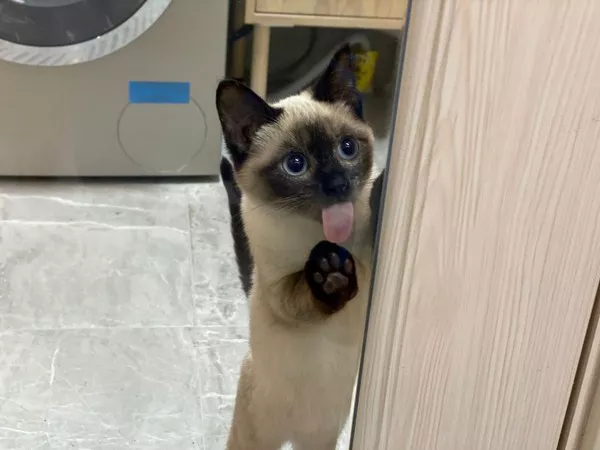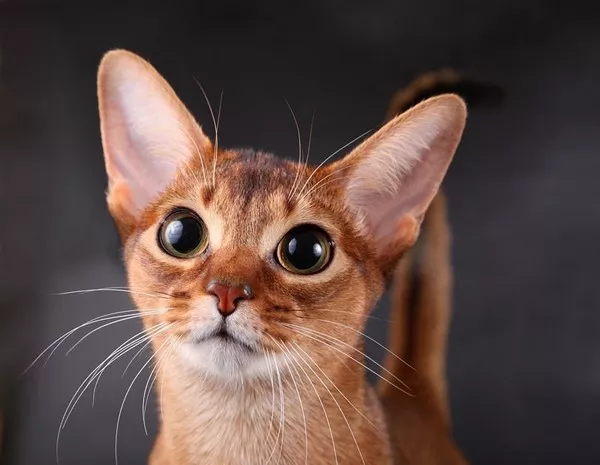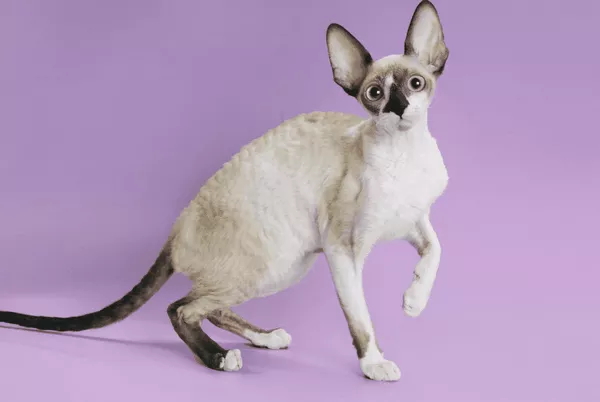Siamese cats are known for their beautiful, distinctive appearance. With their striking blue eyes and pointed fur pattern, they are a favorite breed among cat lovers. One interesting aspect of Siamese cats is that their fur can change color over time. This phenomenon, known as “point progression,” is a natural and normal part of the breed’s development.
Understanding Point Progression
The term “point” refers to the darker coloration on certain areas of a Siamese cat‘s body, such as the ears, face, legs, and tail. The rest of their body is typically a lighter color. When a Siamese kitten is born, their entire body is a pale cream color with no points. As they grow and develop, the points gradually darken. This process usually starts at around four weeks of age and continues until the kitten is about two years old.
Point progression occurs because the enzyme responsible for producing pigment in these areas is temperature-sensitive. The cooler parts of the body, such as the feet, ears, and tail, promote the production of pigmentation enzymes. In contrast, the warmer parts of the body, such as the torso, inhibit pigment production. Therefore, as a Siamese cat grows and develops, the points will gradually become darker due to changes in body temperature.
Factors That Affect Point Progression
Several factors can affect how quickly or slowly a Siamese cat’s points progress. The most significant factor is the cat’s age. Younger cats tend to have more gradual point progression than older cats. For example, a six-month-old Siamese may have faint points compared to an adult Siamese who has fully developed points. The cat’s overall health can also play a role in point progression. If a cat is sick or stressed, it may slow down the process, while a healthy, happy cat may develop points more quickly.
Another factor that can affect point progression is the cat’s environment. Siamese cats that live in warmer climates may have lighter points than those living in cooler environments. Similarly, cats that are kept indoors and exposed to stable temperatures may have slower point progression than cats that spend time outdoors.
Color Changes in Older Siamese Cats
While point progression is a natural part of a Siamese cat’s development, some older cats may experience additional color changes. As a Siamese cat ages, its fur may begin to lighten or darken in certain areas. This can be due to several factors, including sun exposure, illness, or hormonal changes.
One condition that can cause changes in a Siamese cat’s coat color is hyperthyroidism. This thyroid disorder is common in older cats and can cause a range of symptoms, including weight loss, increased appetite, and changes in coat color and texture. If you notice any significant changes in your Siamese cat’s coat color, it’s essential to consult with your veterinarian to rule out any underlying health issues.
At what age do Siamese cats change color?
Siamese cats are born with a pale, almost white, coat and their points (ears, face, tail, and legs) gradually darken over the first few months of life. The process is called “pointing” and it occurs due to the cat’s temperature-sensitive enzyme. The change in color is influenced by the environment, so there is no set age at which Siamese cats change color. However, most Siamese kittens begin to show noticeable pointing between 4-6 weeks old and have fully developed points by the time they reach four months of age.
Conclusion
In conclusion, Siamese cats are a unique breed with a distinctive appearance. Their fur coloration, known as point progression, is a natural and normal part of their development. As Siamese kittens grow and develop, their points gradually darken due to temperature-sensitive enzymes. Several factors can affect point progression, including age, health, and environment. While older Siamese cats may experience additional color changes, these can often be attributed to sun exposure, illness, or hormonal changes.
Overall, Siamese cats are beautiful, intelligent animals that make wonderful pets. By understanding their unique characteristics, including point progression, you can provide them with the care and attention they need to thrive.


























